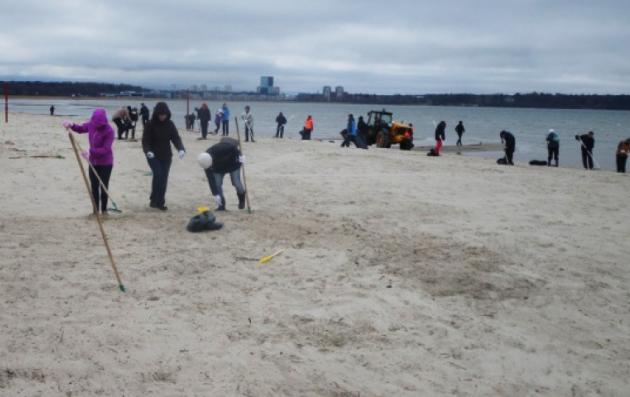Summary
Every year from April to May, the City of Tallinn (EE) holds a big Spring Clean-Up Campaign. Volunteers get together to clean salt from streets, plant trees and flowers, pick up litter from Baltic beaches. There are celebrations and a far-reaching environmental awareness campaign. In terms of waste management, the main actions are to remove self-generated landfills, collect hazardous waste and clean up roads and green areas. This involves the city cooperating with waste treatment companies, residents of city districts, non-profit associations, apartment associations, schools, youth organisations and pensioners. The Spring Clean-Up Campaign is widely publicised in Estonian and Russian, with a public screen in the central Freedom Square, coverage in district newspapers, a campaign website and a booklet "The ABC of Public Facilities and Maintenance". In 2017, the event took place for the 26th time.
The solutions offered by the good practice
Clean-up of roads, residential areas and green areas. Clean-up actions organised by city institutions, district authorities, NGOs, local communities, schools and residential associations. Planting of trees in schools on Earth Day. An educational project for schools: "Let’s see, know and do!" Participation in European Clean-up Day. Demonstration of environmentally friendly cleaning products. Mobile collection of hazardous wastes in residential areas.
Building on the sustainable and integrated approach
For each year, the city has planned a specific budget to organise the Spring Clean-Up Campaign, covering the costs for different city-wide activities related to maintenance. All the city districts are involved in the activities of the Spring Clean-Up Campaign and the needs for specific activities are discussed jointly.
In addition, opening and closing events of the Spring Clean-Up Campaign are organised. In the opening event, the traditional Spring Clean-Up Campaign is officially declared open and in the closing event, the most active and industrious participants of the maintenance works are thanked and recognised.
There are traditional activities, such as washing the waiting shelters for urban public transportation and cleaning urban waste and trash from roads and pavements. In addition, road salt is removed from the streets during the Spring Clean-Up Campaign. Trash piles, which have accumulated over time, are also removed.
Based on a participatory approach
If such events are regularly organised each year, then people want to participate and wait for the next event, so as to help keep their home surroundings in good order. The time and place of a specific event is announced in the local newspaper (Linnaleht) and the citizens are invited to participate.
Posters are placed in public places and public institutions, announcing the time and place of the event, and advertisements are displayed in supermarkets informing the audience of the specific event taking place in their city district. In public transportation, if there are screens available, information about the events organised in the city is displayed. City district governments send e-mail invitations to different authorities located in the city to participate in these events.
What difference has it made?
Regarding the information campaign of the Spring Clean-Up Campaign, there is an animation clip that is shown on TV, on the website's home page, on Facebook, in public transportation and on the screen located at Freedom Square (Vabaduse väljak). There are also urban media, information days, outdoor posters, hanging banners.
The people’s environmental awareness has increased. Satisfaction surveys of the citizens of Tallinn show that the Spring Clean-Up Campaign is well-known (69% of all citizens) and people participate willingly in many events and cleaning campaigns.
Why should other European cities use it?
Organising the Spring Clean-Up Campaign is a very good opportunity for local government to include city residents in the maintenance of their home surroundings. Such activities increase the satisfaction of people and help them to change their habits. Therefore, it is easier to acknowledge the importance of each person’s contribution in ensuring proper maintenance.
-
176_Tallinn_GPsummary.pdf(PDF, 262Ko)

